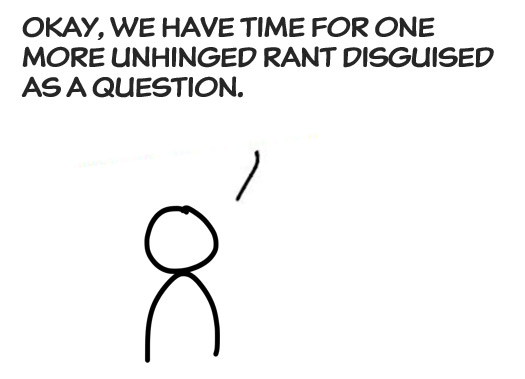Q&A: The Basics
It's easy to run a good Q&A
Q&As tend to be the least exciting part of a talk, dreaded by speakers and audiences alike. Here’s how to fix that, starting with the setup.
1. Share something after the Q&A
Q&As are unpredictable. Maybe the last question is weird. Or maybe people are quiet (“More questions? Anyone?”) These are not great ways to end a talk.
The trick is to share a short story or example at the very end, after the Q&A. That way, you control how your talk ends – which matters a lot for how people remember it.
When picking your closer:
Don’t introduce new ideas. Instead, pick something that reinforces your key message.
Speak to the heart more than the brain.
3-4 minutes is a good length: short, yet long enough to feel substantial.
The best closers can be varied in length (if the Q&A goes short or long.)
If you run out of time, use a single slide with a punchy quote instead.
One important thing: When using this approach, tell the host and the tech team that you have a closer, just so they don’t interrupt you.
2. Show a summary slide
People often focus on your last point as that’s what is freshest in their minds. This limits the Q&A. For a richer discussion, show a summary slide when you start the Q&A, and leave it up during the discussion.
A good summary slide:
Has one to three words for each main idea you shared in the talk.
Shows a reminder image for the key examples.
Includes your name (as people often post photos of the slide).
If your talk builds on a core model or framework, you can use that instead. You can also include your contact details on the slide if you want.
3. Use filler talk to ease people into the Q&A
If the switch to Q&A is sudden – “So that’s it; now, what questions do you have?” – you’ll be met with an awkward silence. For a smoother transition:
Do a 30-second ‘filler’ talk as you open for questions, giving people time to switch gears.
Ask for reactions, not just questions. Not all comments will fit into the question format.
Show the summary slide, repeating the insights as you share them one by one.
Here’s a word-for-word example of how to start a Q&A. Notice how the first line sets up the closer.
See also How to Hijack a Question and Q&A: Seven Common Problems.



